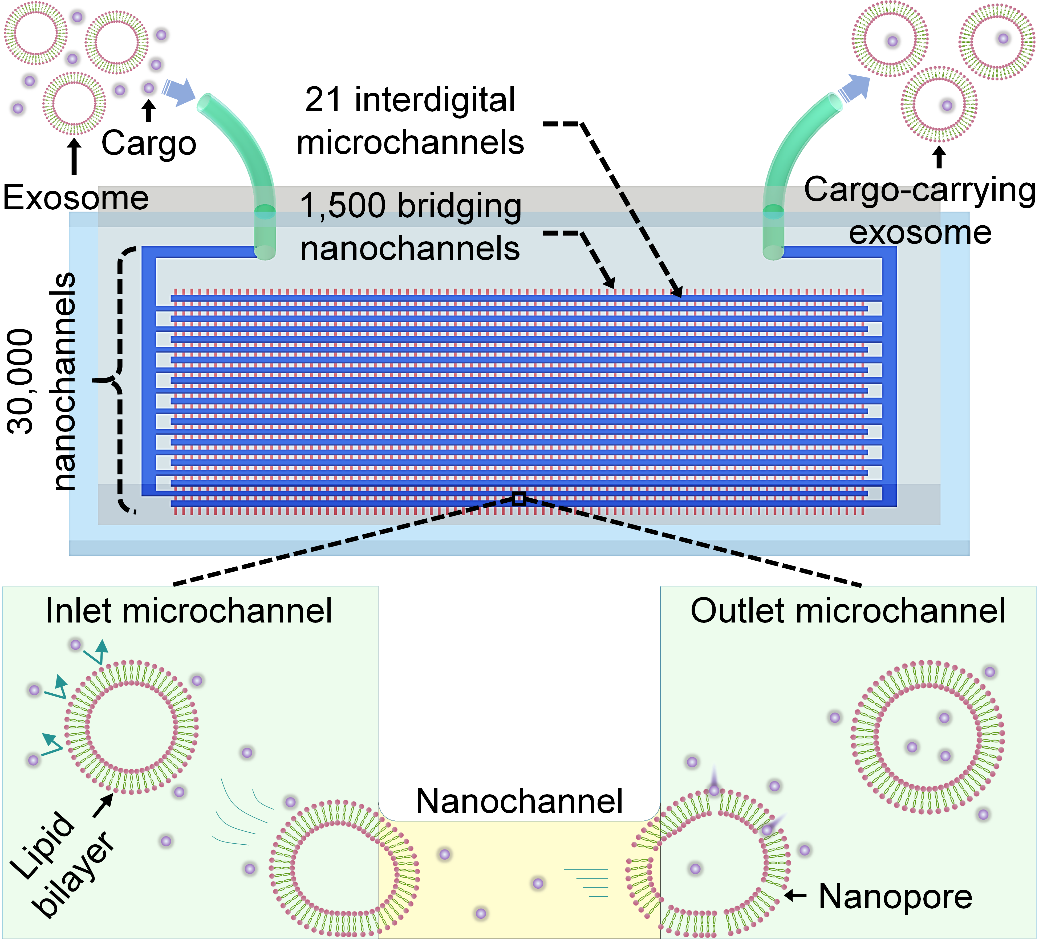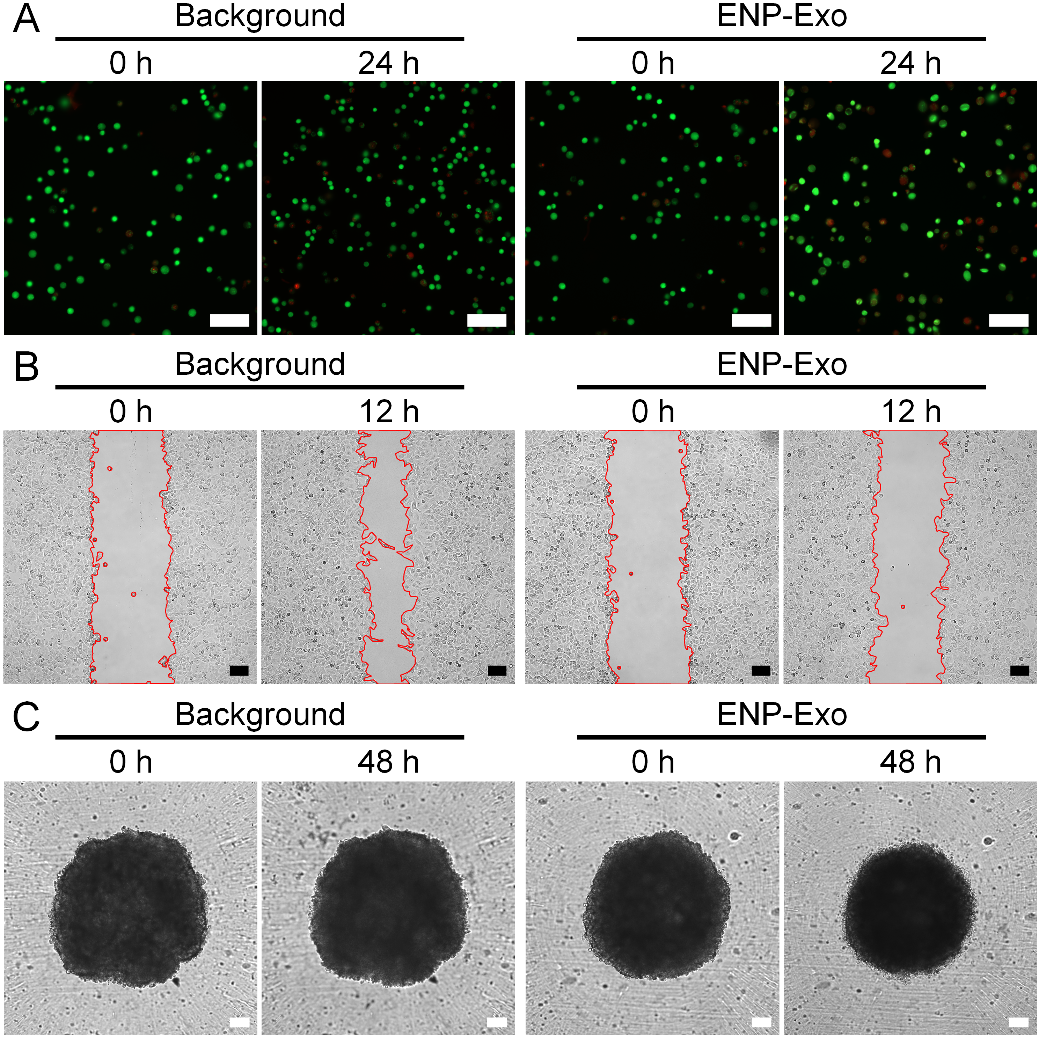Exosome Nanoporator: An Innovative Nanofluidic Device to Develop Exosome-based Drug Delivery Vehicles
Date:03-09-2021 | 【Print】 【close】
The research group of Prof. YANG Hui in Shenzhen Institute of Advanced Technology (SIAT) of the Chinese Academy of Sciences, has recently presented a novel nanofluidic device for high-throughput preparation of exosome-based drug delivery vehicles. Their latest results were published on Small, entitled “A High-Throughput Nanofluidic Device for Exosome Nanoporation to Develop Cargo Delivery Vehicles”, and featured on the back cover.

Figure 1. Journal back cover – Exosomes loaded with drugs by the high-throughput nanofluidic device can induce death of human lung cancer cells (Image by Small website).
Exosomes are biological nanoparticles that are secreted into extracellular space or body fluid by almost all cell types, with a diameter of about 30 ~ 200 nm. Since exosomes exhibit a naturally derived composition and function as intercellular communication tools, they have demonstrated many advantages over existing drug delivery vehicles, such as low immunogenicity, strong tissue penetration, enhanced targeting effect, and strong ability to cross the blood-brain barrier, etc. Therefore, exosomes have great potential as smart vehicles for cargo delivery.
However, the commonly used methods to prepare exosomes that carry desired cargos, such as electroporation, have always been suffered from low loading efficiency and excessive damages on both exosomes and their cargos, making the application of exosomes on biomedicine face great challenges. Prof. YANG's group proposed a high-throughput nanofluidic device named “exosome nanoporator (ENP)”, which can load a variety of exogenous cargos into exosomes and obtain a large number of exosomes containing drugs.
The ENP can accurately control the characteristics of fluid in nanoscale by nanofluidic technology, so as to realize highly controllable preparation conditions of exosome-based drug delivery vehicles. Based on MEMS-based micro- and nano-fabrication processes, nanofluidic channels with precise geometries are manufactured, realizing 30,000 modules working in parallel in a single device. By transporting exosomes through the nanochannels, exosome membranes are permeabilized by mechanical compression and fluid shear, generating transient nanopores on the exosome membranes and allowing influx of cargo molecules into exosomes from surrounding solution while maintaining exosome integrity.

Figure 2. Schematic illustration of the ENP to prepare cargo-carrying exosomes (Image by Small website).
The study selected a clinically approved chemotherapeutic antitumor drug, i.e. doxorubicin hydrochloride, as the cargo model, and confirmed that the ENP can efficiently load it into exosomes. Further, the exosomes treated by the ENP can deliver their drug cargos to human non-small cell lung cancer cells and induce cell death, indicating the potential opportunities of the device for developing new exosome-based delivery vehicles for medical and biological applications.

Figure 3. In vitro inhibiting effect of DOX·HCl-carrying exosomes on cancer cells. Live/dead staining of cancer cells (A), cell migration test (B), as well as tumor spheroids (C) all verified anti-cancer effect of the drug-carrying exosomes (Image by Small website).
The research team is striving to standardize the production of this nanofluidic device. In future, this new strategy is expected to develop into a platform to load different exogenous substances with biological significance and clinical therapeutic effects into exosomes, opening new opportunities for this technique to be applied in biological research and cell-free therapy.
Novel nanofluidic device for efficient exosome-based drug delivery (Video by SIAT)
Media Contact:
SUN Lujia
Email: lj.sun@siat.ac.cn
Download the attachment:
A High-Throughput Nanofluidic Device for Exosome Nanoporation to Develop Cargo Delivery Vehicles (Small 35/2021)